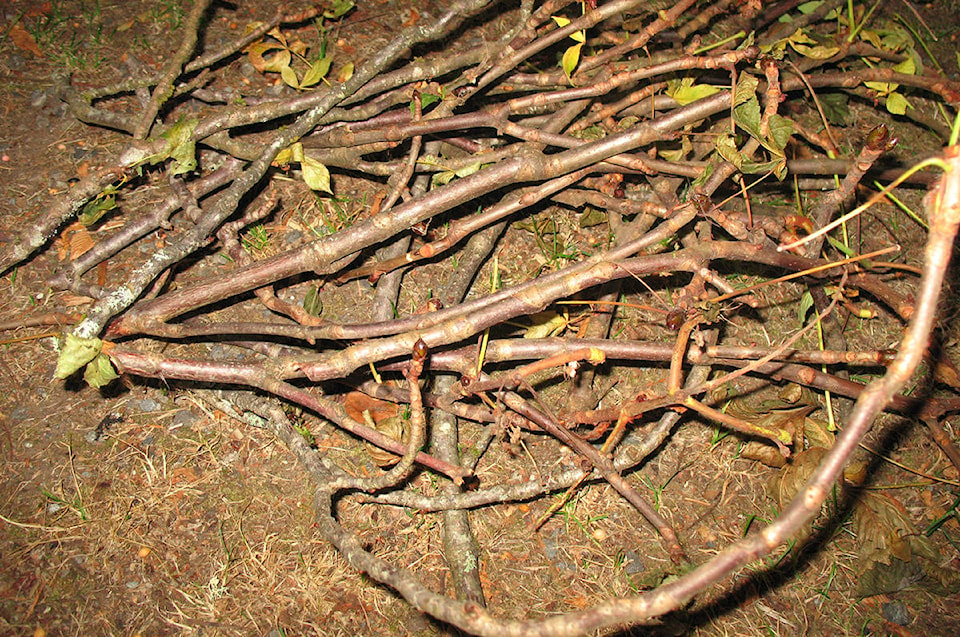It’s time to make compost with all the material from the garden and leftovers from the kitchen.
During the year, I toss all vegetable scraps and spent crops into one box, ready to add to the fall compost heap that I make in another box. I’ve dabbled with building up the compost as I go but it’s too much hassle to keep buckets of soil and clay and soft rock phosphate handy to spread on each layer, so this once-a-year creation works better for me. In the summer I leave the lid off the box for storing vegetation so when I add wet leftover vegetables they dry out on the top of the pile.
Mine won’t be ready to use till next fall because the compost boxes are in the shade. I read that compost may cook too quickly when it’s in the summer sun and much nitrogen gases off as ammonia instead of being captured by compost-creating organisms that turn it into black gold. It’s a trade-off though, because if the heap was located in the sun during winter it would probably be ready by spring because the cooler winter sun might be enough for the heap to ferment slowly instead of freezing in the shade. I guess two compost heap areas would be best, but who has the space?
The shade works for me though because I use three boxes. One holds compost from last fall, ready for next spring and one holds vegetable matter ready to toss into the last box which will contain this fall’s heap.
Woody branches and paper do not belong in the west coast heap because they have too much potassium and very little of anything else. Every year they are added to the mix they will continue to add potassium, unbalancing the soil that will not produce the kind of nutrient-dense vegetables I want. My health depends on eating the best quality food I can manage so my soil must be the best I can make it. Besides, nutrient-dense veggies taste better. Compost woody branches separately, maybe with layers of manure and spread them around ornamentals, but not food plants.
Strong stalks like corn and cabbage break down more quickly when they are chopped into six-inch pieces and these are fine for the compost. Nut shells, seeds and fruit pits eventually break down so I add them too. Next spring when I spread last year’s compost I won’t bother to sift it and I’ll pick out the large chunks that didn’t compost down and toss them back into the other decaying heap. The only compost I sift these days is the amount I need for next spring’s potting. I do this in the fall when the compost is still soft because when I’ve left this job for the spring, it’s still been too frozen to sift well and my hands went numb.
I’ve tried adding fertilizer to the heap when I built it in the past but I prefer to add it to the soil at planting time because I can measure exactly what I need. Gardening books recommend a four-foot high, four-foot diameter heap for the best result, but I’ve made good heaps that were much smaller when I didn’t have much room for a garden. I don’t recommend digging meat scraps into empty spaces in the beds. It doesn’t matter how many heavy rocks or screens I cover the ground with, some varmint digs it up and probably makes itself sick on the rotting mess. I bet it’s the cat.
Please contact mary_lowther@yahoo.ca with questions and suggestions since I need all the help I can get.
